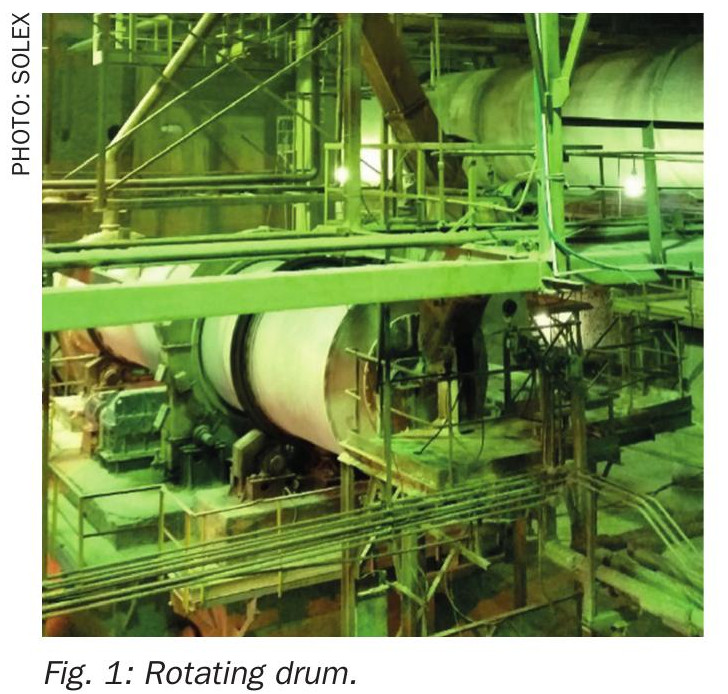Nitrogen+Syngas 394 Mar-Apr 2025

19 March 2025
US nitrogen capacity
UNITED STATES
US nitrogen capacity
New carbon capture-based plants could see US nitrogen capacity jump over the next few years, but Trump attacks on IRA tax credits may scupper some ongoing projects.
The establishment of the US Inflation Reduction Act (IRA) and the Infrastructure Investment and Jobs Act (IIJA) and their tax credits for producing low carbon hydrogen has galvanised low carbon ammonia development in the US, with a number of large scale blue ammonia projects aiming to produce low carbon ammonia for export. The IRA and the IIJA have driven over $300 billion in clean energy investments, including battery production, electric vehicles (EV), hydrogen and carbon capture projects
Major projects
While a number of blue ammonia projects have been proposed, fewer have made it to a final investment decision. Two are so far under construction. The first is the Woodside project at Beaumont, Texas, previously owned by OCI. An additional 1.1 million t/a ammonia plant is being constructed next to 300,000 t/a of ammonia and 1.4 million t/a of existing ‘grey’ methanol capacity. Hydrogen supply will come from Linde, already a major supplier of hydrogen to a network of refineries and other industrial customers in the US Gulf Coast, who will supplying blue hydrogen ‘over the fence’ from a new clean hydrogen facility. The ammonia plant is nearing completion and due to start up this year, with carbon capture beginning in 2026.
In Indiana, Wabash Resources is developing a 550,000 t/a blue ammonia project, using an existing petroleum coke gasification plant as a front end to the ammonia synthesis unit. A $1.6 billion loan guarantee was extended last year by the US Department of Energy which will cover two thirds of project costs. The plant is currently planning to start up in 2026.
Many other projects are at the development stage. CF Industries and Mitsui are looking to a 1.4 million t/a blue ammonia plant in the US Gulf Coast to supply Europe with lower carbon ammonia (although carbon capture rates are put at 60%), and a final investment decision is expected imminently. BASF and Yara are looking at a similar sized plant in the Gulf Coast with 95% carbon capture, but have also not made a final investment decision, and LSB Industries and Japan’s Inpex are also performing front end engineering and design on a 1.1 million t/a blue ammonia project in the Houston Ship Channel.
Policy shift
However, the Trump administration has taken a diametrically opposite view to the Biden administration and made an effort to reverse many of its environmental policies. The US has announced its intention to withdraw from the Paris climate agreement, and halted financial contributions to several climate mitigation and adaptation efforts, revoking the US international climate finance plan. The Trump administration has also suspended new funding under the IRA and IIJA under a new ‘Unleashing American Energy’ executive order, putting grants, loans and tax incentives for clean technologies at risk. Approximately 60% of funding for the IRA comes from tax credits. However, Trump would require legislation to be passed through Congress to completely eliminate or change the tax credits. That being said, he will likely be able to narrow the credits, with the new tariffs also potentially raising project costs, adding uncertainty to the projects already under way.
Trump’s administration is also expected to make regulatory changes and legislative amendments to the IRA, including potentially tightening eligibility for clean energy tax credits, making it harder for projects to qualify, accelerating expiration dates for key tax incentives, reducing long-term investment certainty.
Conversely, expanding fossil fuel production to “drill, baby, drill” has been the centre of Trump’s energy policy. One possible driver for blue ammonia exports from America had been the potential for restrictions to US LNG exports and a desire to monetise US natural gas. President Biden paused new approvals for US LNG export projects, and seemed to be seeking to restrict LNG outflows, but the Trump administration has restarted approvals for liquefied natural gas (LNG) exports.
Investor uncertainty
Even with IRA credits, Nutrien had backed out of a 1.2 million t/a blue ammonia project for Geismar, and ExxonMobil withdrew from the Baytown project. Air Products is looking to sell its own stake in another US Gulf blue ammonia project. Carbon capture and storage for blue ammonia production increases the cost by around $120/t ammonia, while autothermal reforming credits producers with only $76/t under IRA 45Q assuming 95% of emissions are directed to enhanced oil recovery, or $129/t for geological storage. Enhanced oil recovery can also recover some cost – around $40/t CO2 , or about $60/t ammonia. This means that in theory the process breaks even, but it can depend on variables such as the distance that the CO2 must travel to be pumped, the nature of the underground field and expected rates of oil recovery etc. Uncertainties about tax credits will make investors even more nervous.
There is also a question of demand. There are three major sources; power plant operators in east Asia looking to reduce the carbon impact of operations; ship owners seeking to comply with IMO low carbon fuel mandates; and the European Union, whose Carbon Border Adjustment Mechanism will see steadily increasing additional taxes on grey ammonia entering the EU from next year.
Of course, not all projects need be ‘blue’ The 1.3 million t/a Gulf Coast Ammonia plant is currently in start up, and may begin exports this month. But at the moment the fate of the IRA and its tax credits looks like it will determine how much additional ammonia is coming out of the US Gulf in the next few years.






